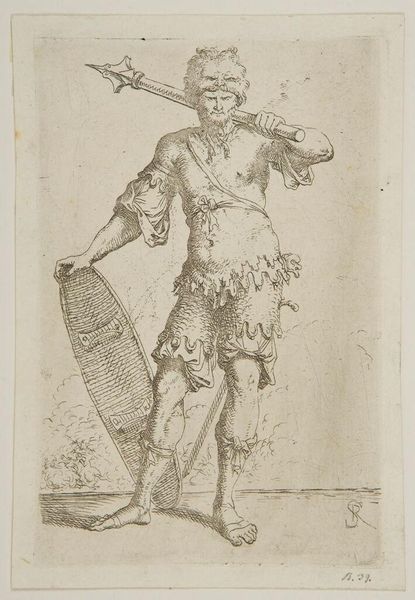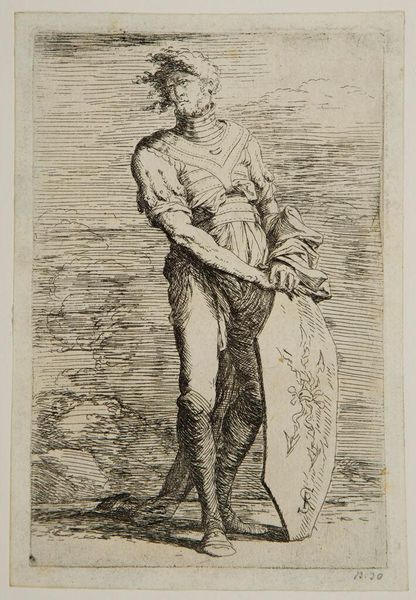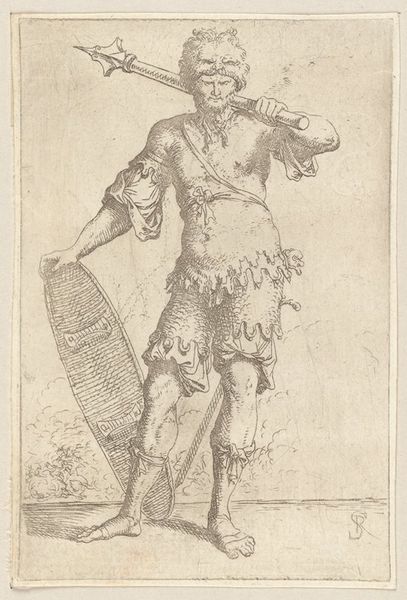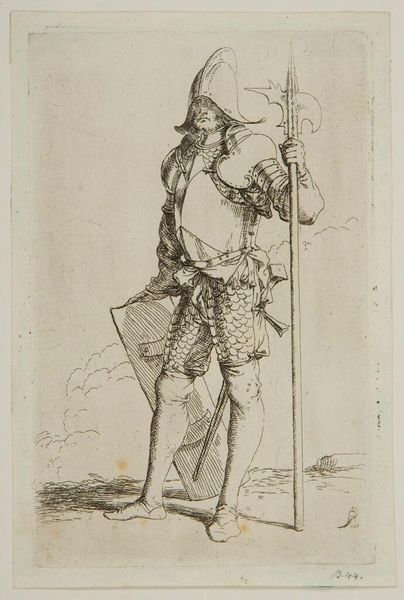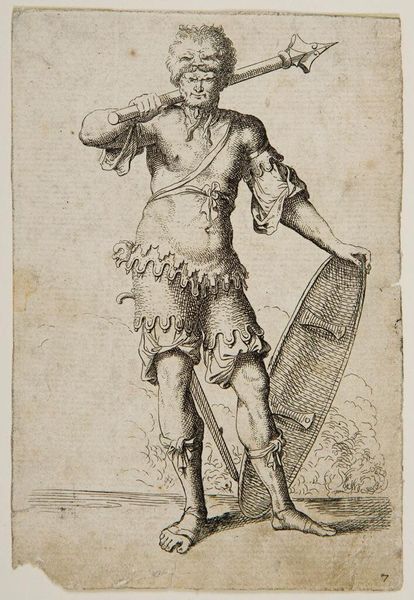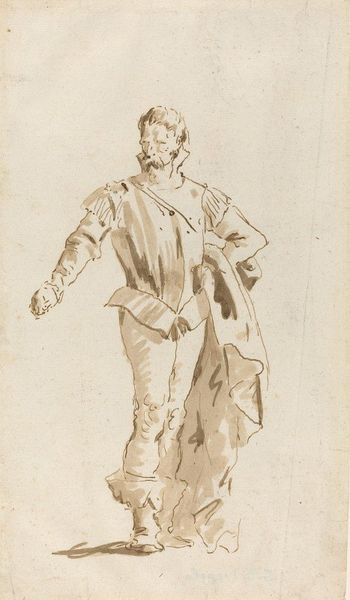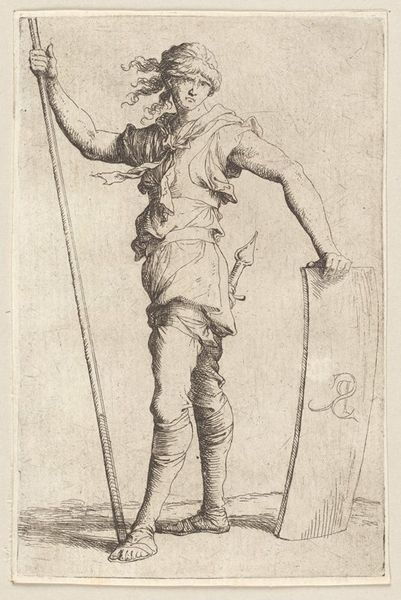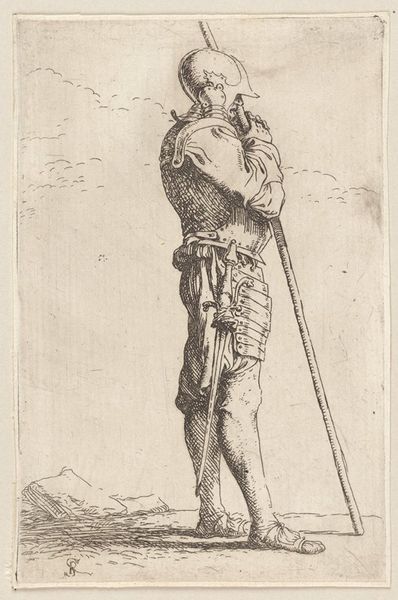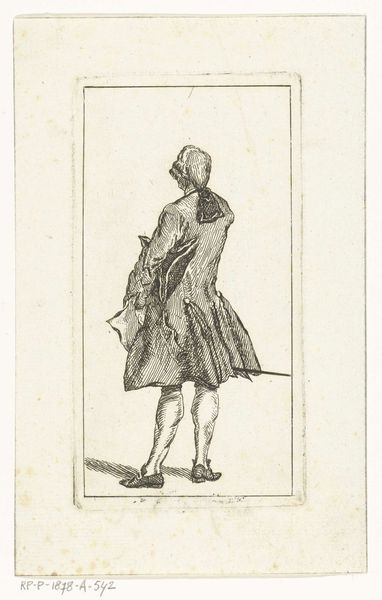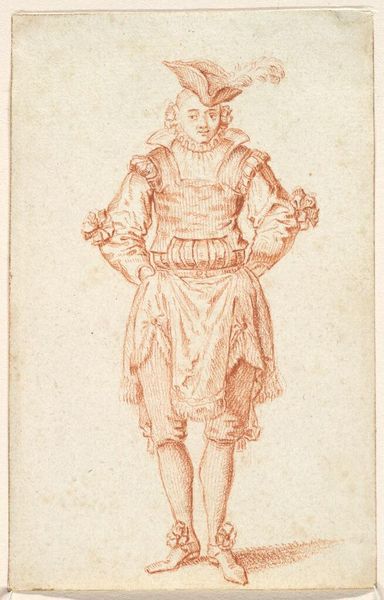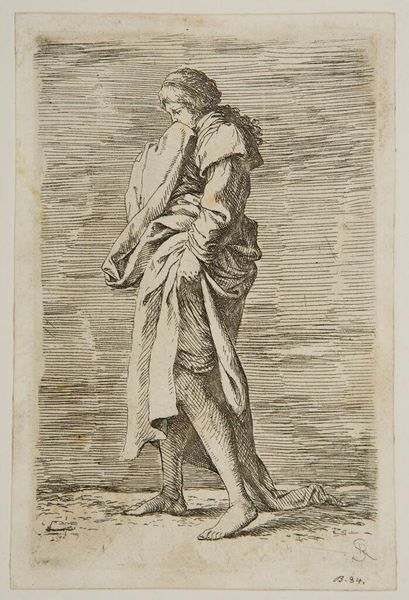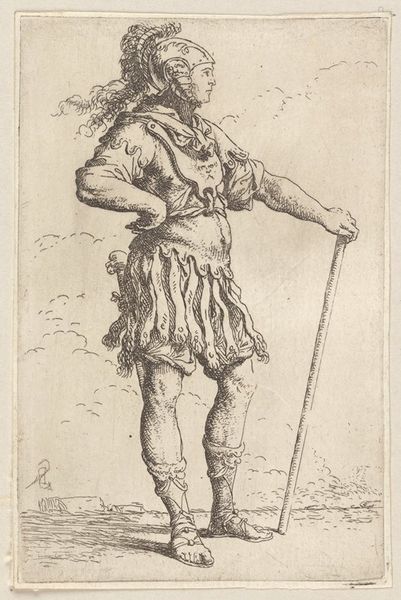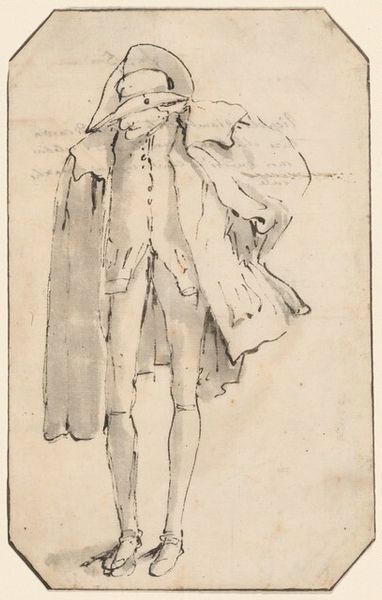
Copyright: CC0 1.0
Curator: Salvator Rosa, who lived from 1615 to 1673, created this print, titled "Soldier with a Sword and an Oval Shield," now held at the Harvard Art Museums. It depicts a figure in rudimentary armor. Editor: My first impression is one of vulnerability. His posture is confident, but the sketchy, almost frantic lines suggest a deeper unease. What does this imagery represent? Curator: It's interesting you pick up on that vulnerability. Rosa was known for his etchings of soldiers, often exploring themes of mercenaries and the brutal realities of 17th-century warfare. The sketchiness mirrors the roughness of mercenary life. Editor: The shield and sword are, of course, the obvious symbols of defense and power. But that shield... it appears almost woven, like a basket. It is a very strange form. Curator: Precisely. The materiality of the shield, perhaps made of wicker or some other readily available material, speaks to the resourcefulness and perhaps the poverty of these soldiers. This speaks to the production of art that is often a material of necessity. Editor: Yes, there's a rawness here that transcends mere portraiture. The sword, the shield, the very *idea* of the soldier becomes a symbol of something more profound, something almost tragic. Curator: Agreed. Considering the historical context—Europe embroiled in constant conflict—Rosa's print serves not as a glorification, but as a stark reminder of the human cost. Editor: I appreciate that tension, the symbolic weight against the lightness of the line. It invites us to question the narratives we inherit. Curator: Indeed, and to consider the conditions under which art, even art depicting violence, is produced. It makes you look closer.
Comments
No comments
Be the first to comment and join the conversation on the ultimate creative platform.
